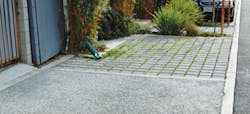About the author: Neal Shapiro is supervisor, watershed section of the Office of Sustainability and the Environment, city of Santa Monica, Calif., and the secretary of the American Rainwater Catchment System Assn. (ARCSA). The opinions stated in this article are of the author only and do not necessarily reflect those of the city of Santa Monica and ARCSA. Shapiro can be reached at [email protected].
We live at a time of chronically poor local water quality and uncertainty of adequate groundwater and surface water supplies, both nationwide and globally. Civilization faces numerous water supply changes from a variety of areas: shortages of freshwater from rising demand and shrinking accessible resources; climatic oscillations, such as more intense precipitation and runoff; less snowpack but earlier melting, which makes storage more difficult for long-term management; and degrading water quality of streams, rivers, lakes and oceans from more intense storm water runoff and exposed soils.
Those involved in watershed management must implement a sustainable water demand and supply-side management paradigm. Such a paradigm must focus not only on potable water solutions, but also on local non-potable water resources, such as recycled water, greywater, rainwater and storm water. One existing (though presently underutilized) water resource is precipitation or rainfall harvested as rainwater and storm water for direct applications.
The Benefits
The primary benefits of rainwater harvesting are non-potable and potable water supply augmentation and water quality improvement. Onsite rainfall harvesting retains the maximum rainfall amount possible on an annual and sustainable basis. This strategy produces the least amount of storm water runoff entering the municipal separate storm sewer system (MS4). It efficiently delivers this water supply for end use at an acceptable water quality and minimal energy cost compared with pumped municipal water. It also is the least polluted water resource and cheapest to treat at this stage compared with storm water.
By keeping rainwater on site, less pollution enters the MS4 for treatment before it ends up in water bodies, where water quality violations can occur. By reducing storm water pollution to impaired or potentially impaired water bodies, a municipality can better comply with federal Clean Water Act and state water quality regulations.
Rainfall harvesting has secondary benefits as well. By keeping rainwater on site through various harvesting and permeable surfaces strategies, eliminating storm water can reduce flooding, peak flows, sewer overflows and hydromodification of waterways. Rainwater harvesting also can help reduce the heat island effect by promoting permeable surfaces in lieu of impermeable, thus lowering water bills. It increases property value due to sustainable water earthworks and storage systems and reduces potable water demand, meaning that more freshwater is kept in watersheds for wildlife and human enjoyment. It insulates from municipal supply disruptions and water rate increases, and lowers municipal storm drain construction costs and maintenance when less storm water has to be managed by a municipality.
City of Santa Monica, Calif.
The city has built two cistern projects for landscape applications. The main library has a 200,000-gal cistern located under the underground parking structure. This water is used for the onsite irrigation. A recently completed multi-family building has a 13,000-gal cistern, also for onsite irrigation. A new city library is presently under construction and will include a 12,000-gal cistern for indoor flushing applications, a first for the city. This new indoor end use is a critical advancement because using rainwater or storm water for irrigation during the rainy season does not save potable water, as the landscape already is saturated. Indoor use provides a dramatic offset of potable water during the wet period. Moreover, if the landscape is climate appropriate and survives on natural rainfall, one does not need supplemental rainfall. But we do need year-round, non-potable flushing water.
Dozens of private projects with rain barrels and cisterns pepper the city, providing residents with supplemental irrigation water in lieu of potable. The systems vary in size and shape, from a traditional 55-gal barrel to 5,000-gal system.
The city has an extensive array of projects where the focus is on infiltrating rainwater or storm water into the ground. The percolation through plants’ roots and the soil allows microorganisms to uptake or neutralize background levels of pollutants, such as oil, heavy metals, organics and nutrients.
The city has three green streets, which harvest storm water from adjacent buildings and streets upstream of the watershed. Green streets are low-tech systems that integrate well with the surrounding community and in which treated water is taken up by plants or infiltrated.
The city also recently updated its bus depot facility and installed three separate rainfall harvesting and treatment systems for onsite infiltration.
When the city retrofitted an existing park and created a new one, infiltration systems were installed to harvest all rainfall from impermeable surfaces or excess from permeable surfaces. The parking lots used parking stall pavers and porous asphalt to allow infiltration.
The typical runoff mitigation solution for private parcels, mostly residential, is an infiltration pit. These BMPs are simple, subsurface chambers filled with rock, plastic matrices or perforated pipes. Roof and driving surface areas are designed to direct runoff to these BMPs, where infiltration occurs and the soil ecology treats low levels of pollutants found in this runoff.
Opportunities Abound
The use of rainwater for potable and non-potable applications offers a significant opportunity in water management to focus on sustainable local water resources, to maximize what exists locally to supplement or displace potable water, leaving more freshwater in the environment.
Treatment systems are readily available and offer safe ways to utilize rainwater and storm water, and protect health. Existing, safe and reliable plumbing design and standards exist; approval procedures exist and are reliable.
Download: Here


